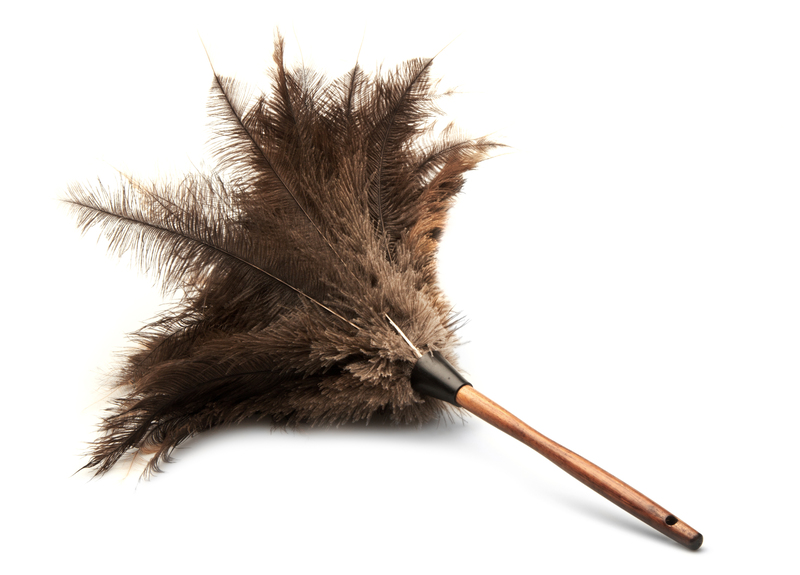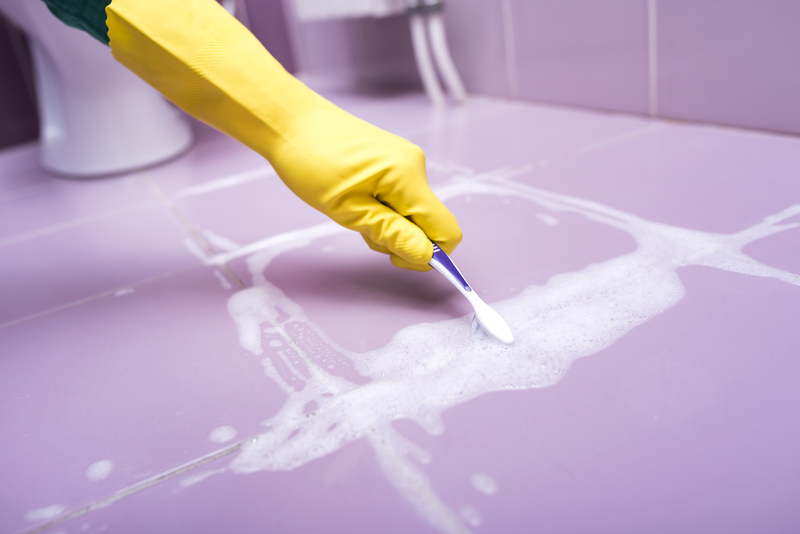Unveiling the Secrets to Immaculate Curtain Care
Are you seeking to keep your curtains looking fresh, clean, and fabulous year-round? Proper curtain care is crucial not just for aesthetic appeal, but also for prolonging the life of your drapes. In this in-depth guide, we'll unveil expert secrets that help you master the art of immaculate curtain maintenance, sharing essential tips, tricks, and best practices along the way. Whether you're caring for luxury velvet draperies or everyday linen panels, discover how to make your window dressings shine with minimal fuss!

Why Curtain Care Matters
- Enhanced longevity: Frequent and correct maintenance can extend the life of your curtains significantly.
- Health benefits: Clean curtains minimize allergens such as dust, pollen, and pet hair, leading to a healthier home environment.
- Aesthetic appeal: Maintained curtains help your interiors look crisp, elegant, and well-cared-for at all times.
- Cost-effective: Proactive care reduces the need for professional cleaning or premature replacement.
Types of Curtains and Their Specific Care Needs
Understanding the type of curtain material and its maintenance requirements is the first curtain care secret to master.
1. Sheer and Lace Curtains
- Delicate fabrics require gentle handling; always hand-wash or use the delicate cycle with cold water.
- Hang to air dry to avoid shrinkage or distortion.
2. Cotton or Linen Curtains
- Most are machine-washable, but always check the manufacturer's label for accurate instructions.
- Pre-treat stains for a truly immaculate finish.
- Use mild detergents to preserve color and texture.
3. Velvet and Heavy Drapes
- Require professional dry-cleaning for genuine maintenance.
- Regular vacuuming prevents dust build-up between deep cleans.
4. Synthetic Blends
- Usually easy to care for -- machine-washable on gentle settings.
- Avoid high heat when drying to prevent fiber damage.
How Often Should You Clean Curtains?
One of the most common questions about curtain cleaning is frequency. Regular maintenance will keep your drapes looking new while protecting your indoor air quality.
- Dust and vacuum: Weekly or bi-weekly to prevent allergens from accumulating.
- Full wash: Every 3-6 months, depending on exposure to dirt, smoke, and humidity.
- Spot-clean: As needed, especially for accidental spills or stains.
The Step-by-Step Approach to Immaculate Curtain Care
Immaculate curtain care is a process that blends regular maintenance with periodic deep cleaning. Below is a clear, actionable guide to ensure your window treatments look pristine all year:
1. Weekly Dusting or Vacuuming
Using a soft-bristle attachment or handheld vacuum, gently remove dust from top to bottom. This method is especially useful for thick or pleated curtains that accumulate more dust.
2. Spot Cleaning Stains Like a Pro
- Address spills immediately with a clean, damp cloth.
- For stubborn stains, use a fabric-specific cleaner and always test in an inconspicuous area first.
- Pat, never rub, to avoid spreading the stain or damaging fibers.
3. Machine or Hand Washing
- Remove all hardware before washing.
- Use cold water and mild detergent for delicate materials.
- Do not overload your washing machine for effective cleansing and minimal creasing.
4. Drying Curtains Properly
- Air dry is preferable for most curtain fabrics. Avoid direct sunlight to prevent fading.
- For cotton blends, use a gentle tumble dry with low heat.
- Hang curtains while slightly damp to naturally release wrinkles -- a bonus tip for immaculate curtain care!
5. Ironing or Steaming for a Flawless Finish
- Use a low-heat setting and iron on the reverse side whenever possible.
- Steaming curtains while they hang can erase wrinkles and leave them looking crisp.
- Velvet fabrics respond best to steaming, as pressing can crush the pile.
Preventive Measures for Long-Lasting Curtain Cleanliness
Don't just react to dirt and stains -- take a proactive approach to curtain care! Incorporate the following habits to keep your window treatments looking their very best:
- Keep windows clean to minimize dust transferring onto drapes.
- Consider using sheer liners behind heavy drapes to trap dust while protecting the main fabric.
- Regularly rotate curtains to expose all areas to equal sunlight and wear.
- Avoid spraying air fresheners, perfumes, or insecticides directly near curtains, as residues can build up and discolor fabrics.
Eco-Friendly Curtain Washing Tips
Modern curtain care also involves a responsibility to the environment. Embrace green cleaning methods for truly immaculate, sustainable results:
- Choose plant-based, biodegradable detergents free from harsh chemicals.
- Air-dry curtains whenever possible to save energy.
- Repurpose old curtains as cleaning rags or craft supplies rather than discarding them.
- Use a bowl of vinegar and water to gently refresh and deodorize fabrics between washes -- a time-honored curtain care secret!
Common Curtain Cleaning Mistakes to Avoid
To achieve spotless and immaculate curtains, avoid these typical pitfalls:
- Skipping label instructions: Always read and follow care tags to prevent shrinking and fading.
- Using harsh chemicals: Bleach and strong solvents can weaken fibers and ruin colors.
- Ignoring sun exposure: Prolonged sunlight can cause colors to fade; use curtain liners or rotate panels regularly.
- Neglecting regular dusting: Letting dust settle can result in hard-to-remove stains and potential allergies.
Special Considerations for Allergy Sufferers
Individuals prone to allergies should pay extra attention to curtain care. Fabrics can harbor dust mites, pollen, and even mold spores, exacerbating symptoms.
- Opt for easy-to-wash synthetic blends or tightly woven cotton curtains.
- Wash and vacuum curtains more frequently, ideally every month.
- Avoid heavy and layered drapes in bedrooms.
- Consider hypoallergenic, antimicrobial curtain materials if sensitivities are severe.
How to Revive Tired Curtains
Sometimes, even with meticulous care, curtains may begin to look dull or lose their shape. Breathe new life into tired curtains with these handy revival secrets:
- Sun-freshening: Air curtains on a breezy, dry day to naturally deodorize and lift fabrics.
- Starch treatment: Lightly spray curtains with starch before ironing to give them added structure and crispness.
- Trimming threads: Routinely snip loose threads and inspect hems for repairs.
- Accessorize: Change tiebacks, rods, or trims for a refreshed look without buying new drapes.
Professional vs. DIY Curtain Cleaning: When to Call the Experts
While DIY strategies work for most everyday materials, some situations demand professional intervention, especially for specialty curtain care:
- Antique or lined drapes with intricate embroidery or embellishments often require professional cleaning.
- Extremely large or unwieldy curtains (such as in theaters or ballrooms) need specialized equipment for safe laundering.
- Persistent stains, odors, or damage should be addressed by an expert to avoid making issues worse.
Immaculate Curtain Care & Seasonal Maintenance
Regular curtain care should adapt with changing seasons. Dust, moisture, and sunlight differ throughout the year and can impact your maintenance routine:
- Spring: Conduct a thorough clean, wash, or dry-clean after the winter to remove accumulated dust and mildew.
- Summer: Watch out for sun exposure and rotate curtains to prevent uneven fading.
- Fall: Deep clean before closing windows for winter to avoid trapping allergens indoors.
- Winter: Regularly vacuum curtains near radiators and humidify to prevent static and fabric drying.
Curtain Care for Homes with Pets and Kids
For households with children or furry companions, impeccable curtain care is even more vital. Consider these practical tips:
- Choose low-maintenance, machine-washable fabrics that withstand frequent cleaning.
- Mount curtain rods higher to keep drapes out of reach from playful hands or paws.
- Incorporate blackout liners or thicker materials to resist stains and wear.
- Clean more frequently to remove pet hair, dander, and unexpected splashes.

FAQs: Your Top Questions About Immaculate Curtain Care Answered
Can I machine wash all types of curtains?
No. Always check labels. Many synthetic and lightweight curtains are suitable for machine washing, but delicate fabrics like silk or heavily embellished curtains require hand washing or professional cleaning.
How do I remove mold or mildew from curtains?
Mold and mildew can be addressed by washing with a diluted vinegar solution, sun-drying thoroughly, and ensuring proper ventilation in the room. For extensive mold, seek professional advice.
How should I store curtains not in use?
Clean the curtains thoroughly before storage. Fold them loosely and keep in a breathable bag or cotton sheet in a cool, dry, and dark location to prevent discoloration or mildew.
Can I use a steam cleaner for all curtain types?
Most synthetics and natural fibers tolerate steam cleaning, but always test a small section first. Avoid steaming delicate lace or silk.
Conclusion: Achieve Immaculate Curtain Care with Ease
The secrets to immaculate curtain care are now at your fingertips. By acting on these expert strategies -- from weekly dusting and timely washing to choosing the right products for each fabric -- you'll enjoy cleaner, more beautiful drapes for years to come. Embrace a regular maintenance routine and make smart choices in fabric and cleaning methods. Your home will reward you with brighter rooms, fresher air, and unparalleled comfort.
Transform your living spaces through proactive curtain care -- because every window deserves to be beautifully framed and impeccably maintained!

